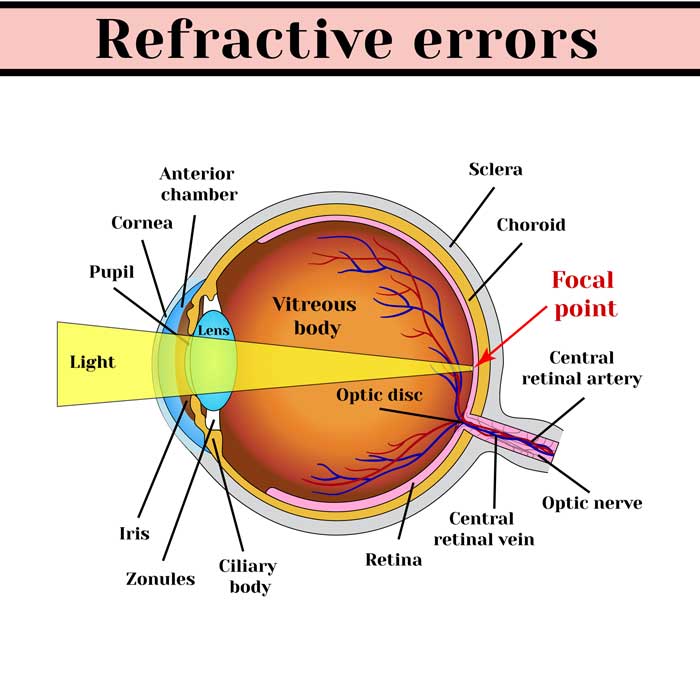Common Eye Disorders & Diseases
It is very common to have eye problems at one time or another. Some disorders seem to be minor that can be cured at home and goes off by its own, while others need a special care and treatment by an expert.
Let's have a look at some common eye disorders. See if any of the below mentioned problems sound familiar to you. Keep a check with the symptoms and treatments.

Refractive Errors
Does this term ring a bell? Refractive errors make it difficult for your eyes to see clearly. These vision problems happen when the shape of your eye prevents light from focusing correctly on your retina.
Refractive Errors are the most common eye disorder, which can be treated and you could have a better vision in no time.
Types of refractive errors:
- Nearsightness (Myopia)
- Farsightedness (hyperopia)
- Astigmatism
- Presbyopia
Age-Related Macular Degeneration
Macular Degeneration is an eye disease that can lead to vision loss. There are two types of macular generation, in dry macular generation, the centre of the retina deteriorates, and on the other hand, leaky blood vessels grow under the retina in the wet macular generation. The key symptoms of this disease are the blurred vision.

Cataract
Cataracts are defined as the cloudy window. Clouding over the lens of the eyes which is normally clear is cataracts. Most cataracts are developed slowly over time, showing the symptoms of blurry vision. The disorder can be surgically treated through an outpatient and safe procedure that restores vision in nearly everyone.
Diabetic Retinopathy
As the name suggests, diabetic retinopathy is a complication of diabetes that affects the eyes. The damage to the blood vessels in the tissue of the retina causes diabetic retinopathy.
The four stages of diabetic retinopathy:
Stage 1: Mild non-proliferative diabetic retinopathy.
Stage 2: Moderate non-proliferative diabetic retinopathy.
Stage 3: Severe non-proliferative diabetic retinopathy.
Stage 4: Proliferative diabetic retinopathy.

Glaucoma
This eye condition is caused when the optic nerve is damaged.
The health of the optic nerve is vital for good vision and when it is damaged, it leads to this eye condition called - 'Glaucoma'. This damage is often caused by the high pressure in your eye.
Initial signs of Glaucoma:
- Loss of peripheral vision
- Seeing halos around lights
- Vision loss
Amblyopia
Also known as 'lazy eye', it occurs in early childhood. The breakdown between the works of brain and the eye which leads to the brain unable to recognize the sight from one eye develops amblyopia.
Symptoms include wandering eye, eyes that may not appear to work together or bad eye depth perception.
Strabismus
Also termed as 'crossed eyes', this condition occurs when both the eyes do not line up with one another. In strabismus, the direction of both the eyes is different and they both don't look towards same direction.
What causes 'strabismus'?
- Blood vessel damage
- Nerve Injury
- Eye tumor or brain tumor
Contact Kenia Eye Hospital
If you are experiencing any of the symptoms that are mentioned above, you know whom to call. Book an appointment with us and get all your eye issues solved by the expert.